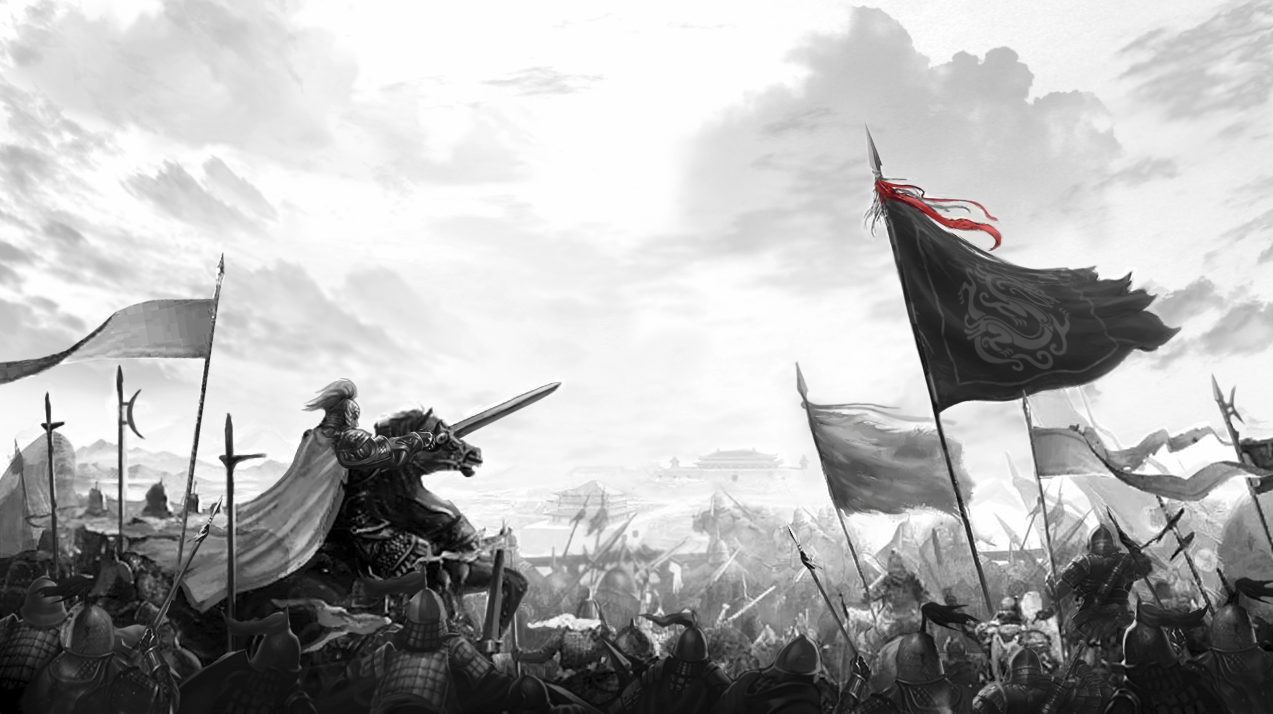What Makes MMORPG Open World Games the Pinnacle of Player Immersion?
The evolution of open world games has been remarkable, transforming from basic 3D sandbox experiments to rich virtual realms with sprawling narratives, dynamic interactions, and persistent worlds teeming with activity. Among them, MMORPGs stand out — not only for their immersive environments, but because they allow players from all corners of the globe to share in an experience larger than themselves. By definition, a **Massively Multiplayer Online Role-Playing Game** (MMORPG) goes beyond isolated solo experiences by crafting social spaces that blur reality with fantasy. Now combined with true open-world mechanics, players are free from linearity, unlocking pathways to exploration that feel both personal and communal at the same time.

Differentiation in gameplay, character agency, community features, and world scale create distinct player journeys across titles. But when you add war elements and clan dynamics—like what we see mirrored even in games like **Clash of Clans** or its conceptual cousin World of Warcraft’s guild system—then open world gaming evolves from being just interactive art into a full ecosystem of strategic depth and competitive flair. These aren't simply “games"—they are living economies where diplomacy between servers matters just as much as dungeon crawling under moonlit skies.
A Closer Look at MMORPG Innovation & Its Rise
| Key Trends Influencing Open Worlds |
|---|
| Era of Seamless Continuity Between Zones |
| Player-Generated Questing Through Emergent Play |
| User Interfaces That Minimize Map Obsession |
| Fully Reactive NPC Communities Based on Player Actions |
- Retro-MMORPG revivals gaining mainstream traction
- Sandbox hybrid models becoming dominant post-pandemic surge
Defining Immersion: Not Just Visuals, But Experience
To say a game is "immersive" once meant it offered pretty environments with realistic lighting effects—but no longer! Immersion has expanded to mean continuity in logic and environment. When your actions alter terrain permanently, affect how villages trade resources, determine whether rival factions ally—or wage unending proxy battles—you're not just playing—you shape the digital realm's fate. This is now a defining characteristic expected in top-tier **open world MMORPGs**, setting new benchmarks for design excellence annually.
Top 1 - Valiance Rebirth (2024)
Billed as an ambitious next-generation MMO built from scratch, Valiance Rebirth merges ancient mythology from dozens of civilizations, each mapped onto a different server shard, ensuring unique political and cultural dynamics per region. Players assume roles beyond heroes—they may become warlocks rewriting history, traders shaping market values, or nomadic scholars preserving forgotten lore. What sets this apart? The procedural economy shaped entirely by player-driven choices—even wars can change gold scarcity unpredictably, causing black markets to emerge dynamically as one server evolves separately from another.

List Of 10 Most Groundbreaking Titles Redefining MMORPG Open Worlds
- Valiance Rebirth
- Aeternum Wars
– Fusing magic tech, inter-server alliances - Elderbound Chronicles
– Timeless realm blending RPG + simulation elements - Grimm Hollow: Legacy Edition
- Myriad Realms Odyssey (MRO)
- Zelvarion Clash (Z.C. 2K24 E3 Reveal Trailer)
- The Last Legionnaire
- Karadûn Eternal
- Veridian Frontline
- Maelstrom Nexus

Rank No. 2 - Aeternum Wars : A Techno-Magic Power Struggle
Unlike many fantasy-centric titles, **Aeternum Wars** stands tall among few MMORPGS boldly fuzing sci-fi warfare concepts into high fantasy settings. Picture wielding lightning rifles conjured using ancient spell scripts while riding mechanized beasts forged from crystal veins deep beneath volcanic tectonic planes! The game’s unique approach allows clans/clan-equivalent “Legacies" to claim orbital bases orbiting planets they control via surface domination strategies.
“The blend isn’t seamless, but when it works—it feels unlike any other genre fusion before." - Eurogamer

No.3 – Elderbound Chronicles: Living History Unfolds
| Feature Set | Persistent Civilization Decay/Renewal Mechanic | Detailed Facial Expression Mapping During Social Missions |
|---|---|---|
| Innovation Score: | ⭐⭐⭐⭐⭐ Outperform Market Expectations |
In Elderbound Chronicles (or ELC), time isn’t a static illusion crafted solely to serve quest timers. Here seasons affect architectural materials: wooden structures decay in prolonged rains, while obsidian bridges form near lava flows over summer cycles. Clans don’t simply conquer regions — they need entire councils to sustain culture. Lose enough population and landmarks vanish from the map. Build enough unity through festivals, diplomacy or war—and monuments get added based off crowd participation in live global votes. In effect: the fate of civilization changes, driven by player behavior instead of fixed developer scripts
 Map Expansion Feature Preview
Map Expansion Feature Preview

No. 4 - Grimm Hollow: Reawakening the Folklore Wildlands

While many modern MMORPGs rely on dragons and epic quests, **Grim Hollow** dives deep into obscure folktails rarely explored in AAA media. You’ll battle spectral goats made of ash in fog-laden swamps or help resurrect cursed villagers bound to cursed dolls left in haunted houses. The game also implements real-time weather affecting enemy spawning and environmental hazards—something many overlook outside simulation-focused niche games.
As for multiplayer elements: the title introduces the "**Shared Haunting System**", allowing up to eight-party squads to navigate dreamscapes together—each entering the same psychic vision of someone's deepest trauma in pursuit of clues or rewards.
"Survive more by relying on strategy rather than overwhelming numbers..." – Community Dev Team

Clan Structures In Grimm Hollow
- Versatility is king in group progression
- Tactical diversity trumps brute strength in PvP skirmishes
- Risk-heavy exploration demands coordinated decision-making
- New players start as “Hunt Apprentices," must gain trust via co-op events
Reward Path Progression
The reward pathway isn’t linear—experienced players unlock divergent specializations leading to vastly different power arcs depending on past choices. Even within a shared clan mission structure, role distribution plays a massive part in how long teams last without suffering fatal penalties from hostile zones...

Small screenshot sample of haunting Dusk Forest Zone.
— From official in-game whisper dialogue upon defeating a banshee queen.
RANK #5 – MYRIAD REALMS ODYSSEY (M.R.O.)
We asked our testers “Do these feel connected to our emotions like earlier classic JRPG adventures once did?" and shockingly… some responded yes. - Producer Statement at G.D.E Conf., Berlin
From Japan emerges a surprising contender that merges eastern aesthetics with expansive west-style sandboxes—a first among hybrid open MMORG frameworks in the industry. Unlike others focusing purely on combat or empire-building, Mro emphasizes story-based faction choice trees that echo Final Fantasy Tactics but scaled horizontally across multiple continents. It doesn’t shy away from anime-inspired UI design which appeals heavily to Nordic countries—Denmark especially—with surveys revealing 82% local youth preferring “more narrative richness" despite complexity spikes

Myriad Realms Core Design Choices Compared To Western Equivalents:
- Narrative Arc Depth
- Loyalty-Bound Class Switching
- Japonised Dialogue With Dub Voice Acting Support Across EU Languages
But perhaps what shocked developers was seeing unexpected growth spikes in Denmark and Scandinavia—an audience usually leaning towards gothic visuals—but embracing the bright colors, vibrant animations and intricate emotional dialogues unique M.R.O brings forth from Kyoto's core development team
// Code-like comment for dev insights:
if player.moral_choice > 10 and faction.alignment != current.path then generate new cutscene reflecting consequence. else if betrayal_level >= 2 spawn rebel faction within 2 game-days. // Conditional consequences impact long playthrough viability!
The game’s moral ambiguity and nonlinear faction loyalty mechanics were praised as bold departures from standard western MMORPG tropes
The ability to switch classes mid-adventure adds tactical variety. But it isn’t perfect:
- Stats take days recalibrating unless you meditate in sanctuaries.
- Switching thrice without mastering previous class locks further upgrades till mastery threshold met.
- If done frequently, a temporary “Stigma Mark" appears making party buffs unreliable unless cleansed ritually.
Diplomatic influence and ritual offerings grant passive faction support. But aggressive expansion destroys goodwill—forcing creative alternatives when raiding key cities. Sometimes forming temporary peace pacts is better... though they may collapse at any point if your honor bar dips
Core Mechanics Unique To Scandinavian Server Clusters:
Only possible during blood moons or lunar eclipses; requires at least three people online. Triggers rare relic drops.
Sound signals that attract nearby enemies unless masked via Silence Rune. Players have used them tactically to divert patrols when needed!
During festival nights you might unlock werewolf hybrid status temporarily—if blessed and drunk under ceremonial mead! This gives boosted attack traits—but also random mood swings including fleeing or challenging friendly members
Rank No 6 – Zelvarean Clash: An Unexpected Shift in MMOTR
In contrast with traditional sword-and-sorcery themes dominates nearly the top five positions here today— Zelvanion Clash (from Polish Studio Verix Labs) dares break from expectations. Instead of magic and swords dominating early access stages—we got something radically unconventional: Total immersion into tank command operations mixed with base-building survival sim systems. Inspired by both **Starcraft**’s base mechanics and World War II tank tactics, the studio introduced what they’re branding as “massively multiplayer open tank realm"—hence why many affectionately abbreviated its release version as ZCL: Operation Ragnarok Beta.

Campaign Modes With Live Server Wars!
- Build underground bases for secret research facilities;
- Engage drone warfare in mountainous terrains via remote control tanks
- Select pilot-class roles for crew synergies – Engineer types boost vehicle stability in sand zones;
- Alliance coordination crucial for successful assaults—real GPS coordinates matter as map layout affects visibility!
This game could easily belong more to the **‘war games last scenes’** search trend category given its reliance on late-game dominance scenarios, similar yet more intricate than the iconic 'last stand' scenarios experienced during siege modes in older military RTS games of decades passed.
| Weapon Classifications | ||
|---|---|---|
| Projectile: High-explosive rockets | Dual-Tube Assault Turrets | Can bypass reinforced steel cover when timed precisely |
| Gauss-Based: EM Pulse Cannon | Disables onboard systems for ten seconds (critical use during drone interception runs). | |
#7 The Last Lengendarium – Endgame Is Only The Beginning?
The concept here flips traditional MMO design philosophies around entirely. Rather than offering level capped endgames post-launch—the game starts there. All new entrants wake up with pre-made characters having maxed-level skills, forced into scavenging ruins while avoiding endless deathloop simulations imposed by godlike NPCs called “The Archive."
- All progress resets weekly, forcing adaptation each Saturday.
- No skill trees unlocked unless collective memory is pieced back via archive missions completed by multiple players in tandem.
- If too many fail a sector, entire zone vanishes from server forever—making collaboration vital!
- Solo progression highly unstable unless hidden relics are found in ancient catacomb libraries (some buried so deeply they reveal new languages never before translated!)
| Last Lengendarium Features Summary |
- New dialect recognition via voice-over mods—players learn fragments linguistically through repeated interactions!
- NPC speech becomes faster with urgency as server collapse clocks accelerate—this adds intense stress pressure never seen before outside psychological test environments

# 8 – Karadûn: Eternals Rising in Post-Shadow Lands
This open-world fantasy sandbox lets player-led factions decide who controls the sun literally — by shifting celestial alignment rods positioned across ancient obelisks. While the core premise seems wild on paper (yes—you change the sun cycle), its underlying systems ensure balance and prevent abuse—so no single entity stays eternal ruler for long.


Absolutely surreal art direction paired with physics-defying architecture reminiscent of Mothergorde or Elden Ring's landscapes.
- Dynamic Sky Systems That Direct Light Energy Flow
- Use prism towers strategically to refract sunlight into areas once cloaked in unnatural shadows.
- Celestial Warframe Crafting: Combine planetary mineraloids collected via orbital traversal crafts obtained from sky-whaling factions
- Yes—I didn't imagine this up; actual in-game mechanic where whale-sized void beasts drift endlessly and offer valuable parts if properly tracked, hunted, skinned mid-atmosphere jumps etc...
Rank #9 Veridian Front Line (VFL)

Where Does V.F.L Stand Alongside Others?
- Post-apocalyptic setting merged with tribal clans vying over energy wells
- Survival elements include scavenging solar battery shards from dead robots





